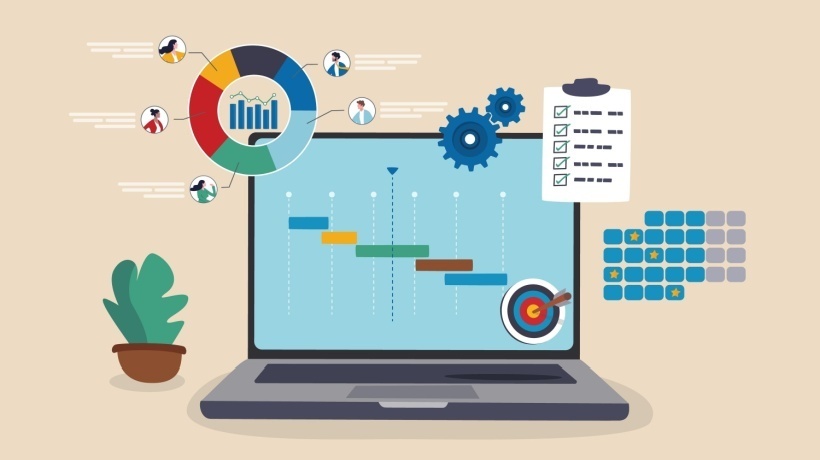Mastering Remote Agile Project Management
The rise of remote work has transformed how teams collaborate, communicate, and deliver projects. For Agile teams, which thrive on collaboration, adaptability, and continuous improvement, the shift to remote work presents unique challenges. However, with the right strategies and tools, Agile methodologies can be successfully adapted to remote environments. This article explores how to manage Agile teams remotely, conduct key Agile ceremonies like stand-ups, sprints, and retrospectives, and leverage tools—including low-code/no-code (LCNC) and AI-powered solutions—to streamline Agile project management.
Adapting Agile Methodologies For Remote Teams
Agile methodologies are built on principles like collaboration, transparency, and iterative progress. While these principles are easier to implement in co-located teams, they can be effectively adapted for remote work with some adjustments.
Key Challenges In Remote Agile Teams
- Communication gaps
Lack of face-to-face interaction can lead to misunderstandings. - Time zone differences
Distributed teams often work across multiple time zones, making real-time collaboration difficult. - Visibility and transparency
Tracking progress and maintaining visibility into tasks can be harder in remote settings. - Team cohesion
Building trust and a sense of belonging is more challenging when team members are physically dispersed.
Strategies For Adapting Agile To Remote Work
- Emphasize asynchronous communication
Not all communication needs to happen in real time. Use messaging platforms for asynchronous updates and discussions. - Document everything
Maintain clear documentation of processes, decisions, and progress to ensure transparency. - Leverage technology
Use project management tools to track tasks, monitor progress, and facilitate collaboration. - Foster a strong team culture
Regularly engage in team-building activities and encourage informal interactions to build trust and camaraderie. - Set clear expectations
Define roles, responsibilities, and workflows to avoid confusion and ensure accountability.
Conducting Remote Agile Ceremonies
Agile ceremonies like stand-ups, sprints, and retrospectives are the backbone of Agile project management. Adapting these ceremonies for remote teams requires careful planning and the right tools.
Remote Stand-Ups
The daily stand-up is a quick meeting where team members share updates on their progress, plans, and blockers. In a remote setting, stand-ups can be conducted via video conferencing tools. Best practices for remote stand-ups include:
- Keep it short
Stick to the 15-minute timebox to maintain focus. - Use video
Encourage team members to turn on their cameras to foster engagement. - Rotate facilitators
Assign different team members to lead the stand-up to promote ownership. - Leverage tools
Use task management platforms to visualize tasks and track progress during the stand-up.
Remote Sprints
Sprints are timeboxed iterations where teams work on a set of tasks to deliver a product increment. Remote sprints require careful planning and coordination. Best practices for remote sprints:
- Plan thoroughly
Use sprint planning meetings to define goals, tasks, and timelines. - Break down tasks
Divide tasks into smaller, manageable chunks to make progress tracking easier. - Monitor progress
Use Agile boards to visualize tasks and monitor progress throughout the sprint. - Communicate regularly
Schedule regular check-ins to address blockers and ensure alignment.
Remote Retrospectives
Retrospectives are meetings where teams reflect on the sprint and identify areas for improvement. Conducting retrospectives remotely requires creativity to ensure everyone participates. Best practices for remote retrospectives may include:
- Use a structured format
Follow a format like "Start, Stop, Continue" to guide discussions. - Leverage collaboration tools
Use virtual whiteboards for brainstorming and idea sharing. - Encourage honest feedback
Create a safe space for team members to share their thoughts openly. - Focus on actionable insights
Identify specific actions to improve processes in the next sprint.
Tools For Agile Project Management In A Remote Setting
The right tools are essential for managing Agile projects remotely. They help teams collaborate, track progress, and maintain transparency. Here's an overview of the types of tools that can support remote Agile teams:
Task Management Tools
Task management tools help teams organize and prioritize tasks, track progress, and visualize workflows. Examples include visual boards for managing tasks and workflows, as well as platforms for backlog management.
Communication Tools
Effective communication is critical for remote Agile teams. Tools that facilitate real-time and asynchronous communication are essential for keeping everyone aligned.
Collaboration Tools
Collaboration tools enable teams to work together on documents, designs, and plans. Examples include platforms for real-time document editing and virtual whiteboarding.
Time Tracking And Reporting Tools
Time tracking tools help teams monitor how much time is spent on tasks while reporting tools provide insights into team performance. Examples include platforms for tracking time and generating performance reports.
The Role Of Low-Code/No-Code (LCNC) And AI-Powered Solutions
As remote work becomes more prevalent, low-code/no-code (LCNC) and AI-powered solutions are emerging as game-changers for Agile project management. These technologies enable teams to automate workflows, streamline processes, and enhance productivity without requiring extensive technical expertise.
How LCNC And AI Can Support Remote Agile Teams
- Automating repetitive tasks
LCNC platforms allow teams to automate routine tasks like task assignments, notifications, and reporting, freeing up time for more strategic work. - Enhancing collaboration
AI-powered tools can analyze communication patterns and suggest improvements to enhance team collaboration. - Improving decision making
AI can analyze data from Agile tools to provide insights into team performance, project risks, and areas for improvement. - Customizing workflows
LCNC platforms enable teams to create custom workflows tailored to their specific needs, ensuring flexibility and scalability.
Examples Of LCNC And AI-Powered Solutions
- Workflow automation
Platforms that allow teams to automate workflows across multiple tools. - AI-powered analytics
Tools that analyze Agile metrics to provide actionable insights. - Custom app development
Platforms that enable teams to build custom applications to support their Agile processes.
Benefits Of LCNC And AI For Remote Agile Teams
- Increased efficiency
Automating repetitive tasks and streamlining processes saves time and reduces errors. - Improved visibility
AI-powered analytics provide real-time insights into team performance and project progress. - Enhanced flexibility
LCNC platforms allow teams to adapt their agile workflows to changing needs and requirements. - Cost-effectiveness
LCNC and AI solutions reduce the need for extensive technical resources, making them accessible to teams of all sizes.
Conclusion
Remote project management for Agile teams is not without its challenges, but with the right strategies and tools, it is entirely possible to maintain the principles of Agile in a distributed environment. By adapting Agile methodologies, conducting effective remote ceremonies, and leveraging tools—including LCNC and AI-powered solutions—teams can collaborate effectively, deliver high-quality results, and continuously improve their processes.
As remote work continues to evolve, Agile teams must remain flexible and open to new technologies and approaches. By doing so, they can not only survive but thrive in the remote work era, delivering value to their organizations and stakeholders while fostering a culture of collaboration and innovation.







